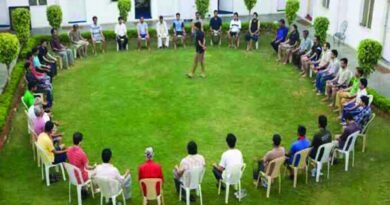India’s misreading of the Chinese situation
ne reason why Communism did not cross the borders of Kerala and West Bengal in India is equality. It is a contradiction of the Hindu ethos of karma and liberty
The Chinese army, or the PLA, is not a national force but belongs to the Communist Party of China. Its genesis was in first allying with the country’s nationalist party the Kuomintang (KMT) led by General Chiang Kai-shek against the Japanese invaders. Thereafter, the PLA fought the KMT in a civil war and defeated them to complete the communist revolution by October 1949. Supposing the Indian Army had belonged to the Congress or any other ruling party; would it have become the crack professional force it now is? Moreover, fighting for one’s country and obeying a political boss are not the same thing.
Hypothetical outcomes or differences would be seen in the battlefield, if we go deeper into some figures. In 1962 the Chinese invasion was a sorry tale for India. Nearly, 5,000 soldiers were killed while about 4,000 were wounded or captured alive. But even here, the Chinese admitted that they had lost nearly 750 killed and 1,700 wounded. It is evident that the Indian soldiers, despite being badly clothed and equipped, fought bravely. Else, the Chinese should not have had so many casualties. During the Korean War in 1951-53, China found the communist North Koreans having to retreat in the face of the overwhelmingly powerful US army aiding South Korea, and went to North Korea’s help. By 1953, the PLA had lost an estimated 1,52,000 soldiers killed and 383,000 wounded. In 1967, just five years after its successful 1962 attack on India, China once again tried to grab Indian territory at Nathu La, but was beaten back by the Indian army, suffering 450-500 casualties to just over 70 on the Indian side. In 1979, China decided to invade communist North Vietnam but despite the size of the PLA, it suffered over 60,000 casualties and had to go back in ignominy. Since its 1979 Vietnam misadventure, the PLA has had no combat experience. Its recent attempts at bullying India, first in Dokalam and then Ladakh, have met with not only failure but also combat casualties. This history does not speak well of the efficiency of the Chinese army.
In fact, communist militaries are not known to be efficient. Josef Stalin claimed to have played a major role in defeating Hitler’s Germany. But such a claim conveniently overlooked the enormity of the Soviet casualties, of over 20 million in the four years 1941-45. Besides, it also ignored the enormous American aid of war material supplied under the Lend-Lease scheme. There is an ideological block with communist militaries; they are unable to develop a proper officer corps. Karl Marx defined the core of his ideology as “from each according to his ability to each according to his need”. He forcefully propagated the equality of the entire working class or proletariat, as he termed it. But all other classes of people stood excluded from this unity; even peasants were overlooked; if they had even an acre or two of land, it was collectivized or taken away. Landlords and urban rich were eliminated. Stalin did all this by killing over 30 million Soviet people during his reign that lasted from 1924 to 1953. Coming to militaries, officers must be respected by their soldiers and not be treated as equals. Implicit obedience is essential for obedience especially on the battlefield.
Communism has destroyed the essence of discipline by prescribing equality. If both soldiers and their commanders are to be political equals as ‘comrades’, off goes the military, or any organization for that matter. One reason why Communism did not cross the borders of Kerala and West Bengal in India is this bug of equality. It is a contradiction of the Hindu ethos of karma and liberty. One cannot prevent a person from performing better and better karma nor help to boost an individual’s poor Karma. One of the first steps after 1949 by Mao’s regime was to take over the ownership of farming land but, unlike Stalin, it simultaneously leased it back. Communists could not trust any class except those who worked for industries or those dependent on state employment. Ideally, they preferred party service to that of the state. This explains why the army in China is owned by the party.
One may briefly linger what the great leader of Singapore Lee Kuan Yew had said about China in the second volume of his autobiography. In the next 50 years Lee said, the Chinese would have to move from a planned to a market economy, from a rural to an urban base. China’s political structures would have to allow its citizens more participation and control over their lives. A third factor would be the widening differences in incomes, growth rates, and quality of life between the wealthy coastal and riverine provinces and the disadvantaged inland provinces. The fourth and most profound factor will be the different values and aspirations of the next generation. Several problems can cause serious disruptions: a breakdown of the banking system, huge unemployment following reforms of state-owned enterprises.
However, the most pernicious problem is corruption. Much of China’s economic breakthrough has been export oriented. Its new factories, small and large, manufacture products that are mostly exported. Many of the larger factories have been set up by foreign entrepreneurs. In such a situation, the country’s rulers should ensure friendly relations with nearly all countries, especially the importing ones. But, as it happens, the current regime has earned the wrath of most nations of the world. What then would eventually happen to China’s exports?
This is the first of a two-part series on Indo-China relations.
(The writer is a well-known columnist and an author. The views expressed are personal.)
Source: The Pioneer




